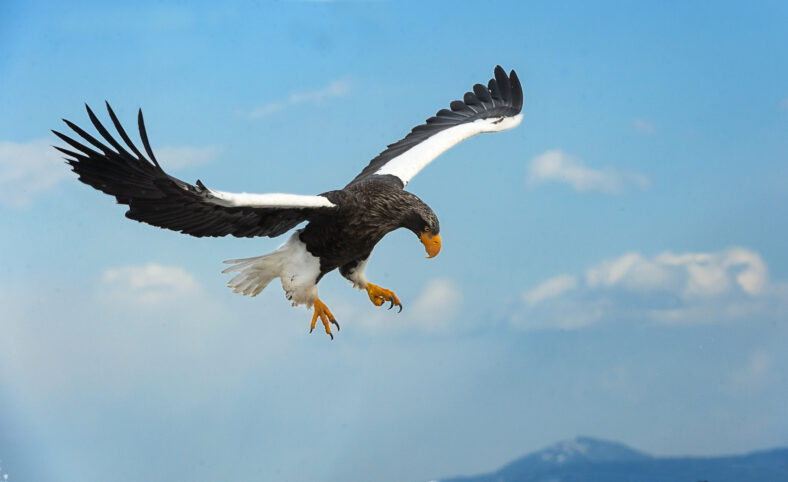A Rare Steller’s Sea Eagle Was Seen In Canada, Which Is Pretty Far Away From Where They Call Home

As large raptors with wingspans that reach up to eight feet long, Steller’s sea eagles are easy to spot as they fly above the water, on the lookout for fish. Their golden beaks and black-and-white feathers also help them stand out from other birds.
The eagles were first described in 1811 by Peter Simon Pallas, a Prussian zoologist and botanist. They are usually seen along the coastlines of northeast Asia, including Korea, Japan, and Russia.
Yet, winter birdwatchers have claimed to observe a Steller’s sea eagle all the way in Newfoundland, Canada. The stray eagle made an appearance at Terra Nova National Park in the middle of December.
The park is a large, protected area situated next to the Atlantic Ocean. Normally, it is closed during the winter, but park officials decided to temporarily open one road after the Steller’s sea eagle sighting to give birdwatchers and wildlife photographers a chance to catch a rare glimpse of the massive bird.
According to the park, there are less than 5,000 Steller’s sea eagles left in the world, and this is the only one of its kind in the Western Hemisphere.
The Steller’s sea eagle at Terra Nova National Park is thought to be Stella, a bird who has been flying around North America for a few years.
Since August 2020, birdwatchers have been following Stella when she was first photographed in Alaska. She then flew to Texas, Quebec, and New Brunswick, Canada.
She even hung out in Nova Scotia for a while before journeying to Massachusetts and Maine. Steller’s sea eagles fly at an average speed of 19 to 30 miles per hour.
Stella was spotted in Trinity, Newfoundland, in the summers of 2022 and 2023. She was feasting on a type of small, oily fish called spawning capelin with some bald eagles. In June 2024, Stella was seen building a nest in Trinity.

Sign up for Chip Chick’s newsletter and get stories like this delivered to your inbox.
“The species often travel from breeding grounds in Russia to wintering grounds in Japan, and most likely, this individual made a navigational error,” said Joseph Tobias, a biodiversity researcher at Imperial College London.
“Sea eagles often wander widely, and this individual must have crossed the Bering Sea Strait by accident.”
It’s unclear exactly how or why Stella ended up so far away from home. Still, birdwatchers and scientists alike are excited that the raptor is choosing to stick around. Perhaps the eagle will make it home one day.
There are an estimated 3,600 to 4,670 mature Steller’s sea eagles in the wild, per the International Union for Conservation of Nature.
The species is listed as “vulnerable” because of its small and declining population. They face many threats, including habitat loss, climate change, lead poisoning, and brown bear predation.
More About:Animals





